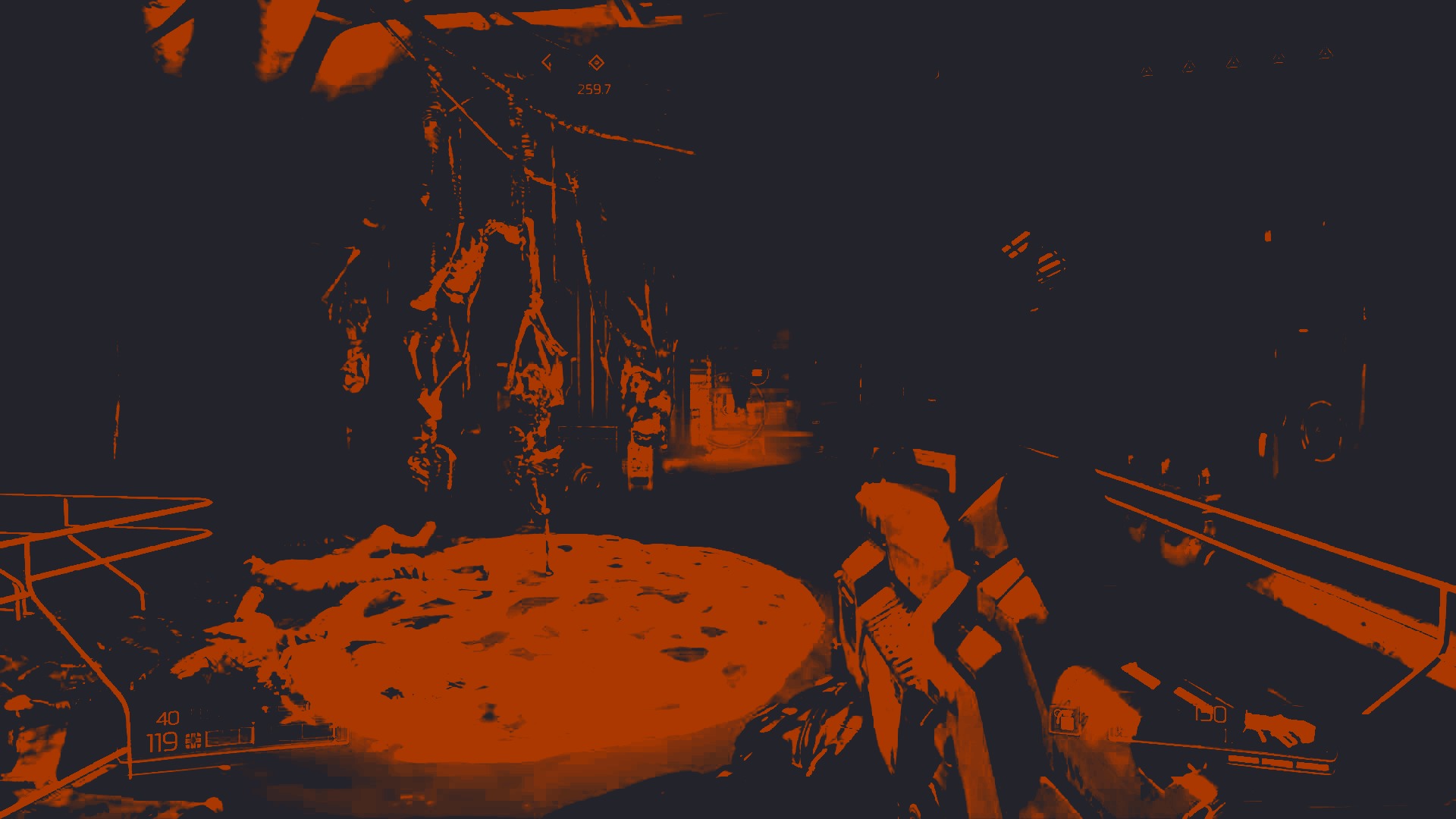
DOOM proves that two videogame tropes—one often maligned by me, one maligned generally—can be executed differently, and that when executed differently can actually work very well:
Trope one, the one generally maligned, is linearity.
DOOM being a remake, when I play it it begs that I make a mental comparison to the 1993 original, a game I largely adore but find circuitous and frustrating, as if—contrary to recorded history—the level designers couldn’t at times be especially bothered, and pretty thoughtlessly, and as if acting on the principle that if you throw enough shit some is bound to stick, kind of carpet-bombed the game with corridors, locked doors, and enemies. I lose track of the guiding, authorial human hand when playing the original DOOM, and spend a lot of my time adrift, trying to find the obfuscated and lateral system of wall and/or floor traps that unlocks the next area, itself also bound to be filled with lateral systems of wall and/or floor traps. In contrast, DOOM (2016), consistently feels pored over, and constructed with intent. I imagine it’s the product of an additional 23 years of games being made, played, and criticised, this extra and I think beneficial perspective. But what I experience in it is a sense of audience-friendliness, a healthier balance being achieved between whatever abstract or eccentric things the level designers want to produce, and the understanding that simply abandoning people to delineate entirely for themselves your creation is not particularly enjoyable, or fair.
I can’t precisely recall when it happened, that “linear” became a dirty word; I can certainly understand why, in the modern day of infinity-hours-long open-world games, where unique player experiences are sanctified to the point their likelihood and providence are used to sell the game to you in the first place, the presence in DOOM of a directive, nudging-style of level design might lead to it being pejoratively classified as “linear”. Nevertheless, in comparison to its ancestor, which oftentimes feels like a thankless trawl, I think it shows the benefits of relinquishing your control as a player over pace and exploration to, albeit draconian in a way that seems to contradict the very nature of videogames, linear design. The corridors connect in a way that makes sense. The map has arrows, icons, and points-of-interest. Flashing objective markers and a voice on a radio tell you what you’re supposed to be doing. It might not challenge your inspection, navigation, and thoroughness skills in the way of the original DOOM, and to that extent might not be as “engaging”, but it also doesn’t gnaw at your patience, and by virtue of it being more laid-out and orchestrated, delivers its action in a way that feels unpacked and presented, as opposed to benign, or stumbled-upon.
It perhaps speaks to an ego, a particular type of videogame player’s ego, that wishes for every game-maker and all of their work to be in service to appeasing its egotistical whims, but I enjoy a game more when it feels as if it’s conscious of how I’ll experience its spectacle, as opposed to letting me discover and malleate it for myself—”linear” can mean a lot, and I think in the case of DOOM it means a team of artists, pretty constantly alongside you, checking you’re having fun and revising their game if not.
Trope two, the one I dislike fervently: mute protagonists.
It’s been discussed before, and not just by me, this idea that in opposition to the intention behind mute protagonists, that they allow players to project themselves into the game and feel more enmeshed with its drama, the inexplicable silences of Gordon Freeman et al—who’ll stand there completely, stonily unreactive even when, e.g., his best friend Eli Vance is getting murdered right before his eyes—actually rip you right out of the game’s world and completely away from its fiction, your hero seeming suddenly so totally artificial, and the creative conceit so apparent, it becomes impossible to relate to or believe anything on-screen.
DOOM’s hero, however, the “Doomslayer”, although he doesn’t speak, he’s still, in silent and physical ways, communicative. The way he smashes computers instead of turning them off, breaks machines that he’s been told are vital to the UAC’s demon-gathering operations, and glances down at a dead body, after the corporation’s CEO insists their practises are humanistic—each of these silent gestures and pantomimes lend the Doom Slayer attitude, and senses of irony and humour. Without wanting to suck the joy from them via over-analysis, I think they’re shrewd and funny owing to the fact they betray a character who, despite him being a mythical, demon-massacring spaceman, has petty and familiar gripes: he has tantrums at technology and thinks his boss is an arsehole, making him, I think, to everyone playing, pretty recognisable, and like the kind of person you’d see eye-to-eye with. So perhaps what I find disagreeable or jarring are not silent so much as totally inert protagonists, those who seem immune to the events—almost always extraordinary, highly emotive events, which as an audience we’re supposed to find and believe and share in the fact they’re extraordinary, and highly emotive—transpiring around them.
I still think words are preferable. I’d like to play especially more first-person games where the protagonists talk, and when they talk is to posit more than just “what do you mean?” or “where is my son?” or “who are The Syndicate?”, or other tag questions conducive to exposition. But DOOM’s Doomslayer at least partially obliterates my suspicion that silent uniformly equals bland protagonist, and I find it almost heartening that a game preoccupied with rendering you insensible using heavy metal music and en masse violence, somewhere in there contains touches of a recognisable person. It’s evidence not every videogame design rubric, nor videogame criticism cliche, is necessarily true, and that regardless of what I might suspect of games I can still, even these days, be pleasantly surprised.
///
Ed Smith contributes to Edge, Rolling Stone, Paste, GamesTM, and PCGamesN.